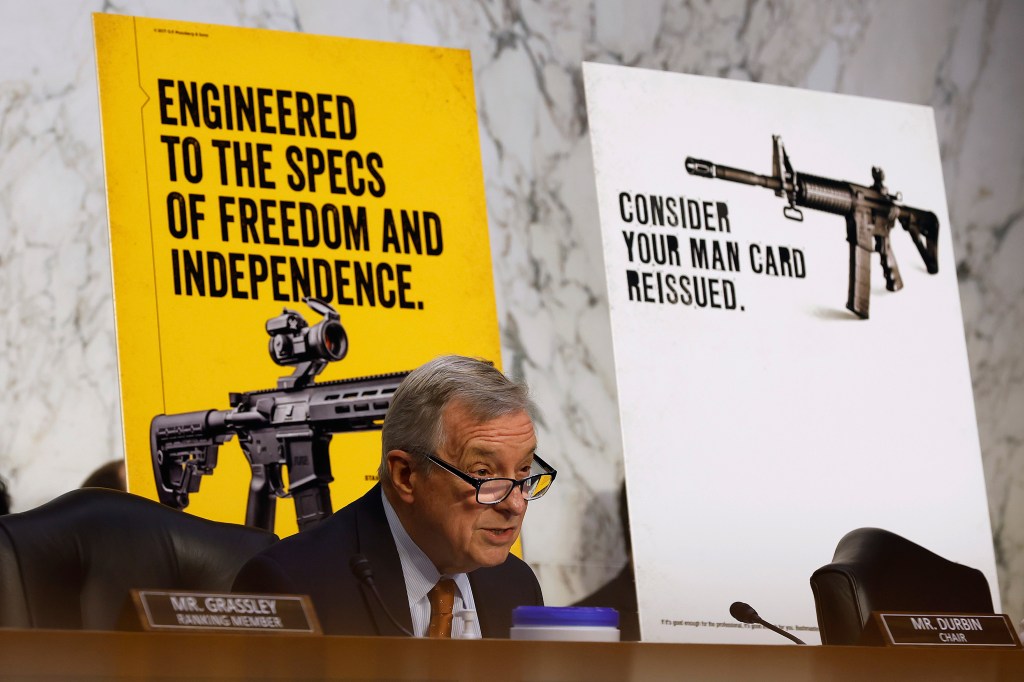On February 26, 1991, just two days before the end of the First Gulf War, thousands of Iraqi soldiers fled Kuwait along Highway 80. A coalition of Western forces led by the United States dropped cluster bombs on the head and tail of the retreating column. Then it began to bomb the convoy. The soldiers who survived, many of them conscripts, walked home in a driving rain. Smoke from the Kuwait oil fields set fire by Saddam Hussein’s forces mingled with storm clouds and black rain fell on the soldiers as they shambled home defeated. President George H.W. Bush declared victory and an end to hostilities two days later.
Midway through the new Call of Duty: Modern Warfare, I sat nestled in a sniper’s nest overlooking the Highway of Death. In Modern Warfare, this is not the road between Kuwait and Iraq but a highway leading from a city into the mountains of the fictional country of Urzikstan. Viewed through the scope of my rifle, Call of Duty’s Highway of Death—with its burnt out cars, gray dust, and cracked road—looks exactly like photographs of Iraq’s Highway of Death.
Videos by VICE

We’re told in a cutscene that, during its invasion of this fictional country, Russia bombed the highway killing people trying to escape. Just like that, in a piece of popular fiction, American atrocities become Russian atrocities. It’s the kind of distance players need to separate themselves from history, to watch the road uncritically through a scope, and place bullets downrange so that their enemies head’s satisfyingly explode. It’s a fun mission.
In his assessment of Call of Duty, my colleague Emanuel Maiberg said Urzikstan is “so blatantly based on Syria that it’s cowardly to call it anything else.” I think it’s more complicated. In the minds of most Americans, the Forever War exists in a nebulous country Over There. We’re fighting in Afghanistan, the Middle East, and North Africa. But all these places are treated as interchangeable.
In the popular imagination, the mountains of the Korengal Valley are next to the Tigris and Euphratesrivers, across the street from the tank graveyards of Syria, downriver from the poppy fields of Kabul, and a just a quick drive down the Cairo–Dakar Highway. The popular and political imagination can no longer tell them apart—hell, it never could—and popular art is not attempting to make a distinction.
In Call of Duty, Urzikstan is an Ur-Country; a prototypical Over There that developer Infinity Ward can layer historical events on. It’s a country Russia invaded and has occupied for two decades. Farah Karim, one of the game’s principal protagonists is modeled on Kurdish freedom fighters . Though her real world origins feel Syrian, her back story and fight—dislodging an imperial power occupying her home—are Afghan.
In Call of Duty’s two most emotionally impactful missions, I played through Farah’s childhood. She wakes up in the rubble of a building after a Russian airstrike, her dead mother staring at her. She escapes through the ruined streets of her home, dodging Russian soldiers and avoiding the gas of an unnamed chemical weapon. In the final moments of the first mission, she sneaks through fields of poppy while snow capped mountains loom in the distance. Both are features of Afghanistan.
“In the minds of most Americans, the Forever War exists in a nebulous country Over There. We’re fighting in Afghanistan, the Middle East, and North Africa. But all these places are treated as interchangeable.”
Russia invaded and occupied Afghanistan from 1979 to 1989. It used chemical weapons—though not on the scale depicted in Call of Duty—and devastated the landscape with air strikes. But America has been in Afghanistan far longer, almost two decades with no real end in sight, and though it didn’t use chemical weapons, it has killed civilians in airstrikes. The highest profile attack being the destruction of a Doctor’s Without Borders hospital in Kurduz which killed 42.
Urzikstan is also Libya. On September 11, 2012, Islamist group Ansar al-Sharia attacked the U.S. Consulate in Benghazi, Libya. The fighters killed four Americans. In Urzikstan, the destruction was more wanton and dozens of innocent embassy personnel died as I moved through Call of Duty’s stand in for the Benghazi Consulate, putting round after round into al-Qatala—the game’s stand in for al-Qaeda—bodies. It’s the best mission in the game.
America is at war, by any reasonable definition, in at least seven different countries. The real total may be higher, but it is hard to say given how much information is still classified. American troops fight in Afghanistan, Iraq, Syria, Yemen, Somalia, Libya, and Niger. It’s also conducting support and surveillance operations in places such as the Philippines, where the Islamic State has a foothold.
But back home, all those wars are Over There. Iraq is Afghanistan is Libya is Syria. It’s all “Sand and death,” as the President said. The distinctions between the fight against al-Shabab in Africa and the Taliban in Afghanistan don’t exist. Call of Duty: Modern Warfare exploits these historical moments and turns them into high quality entertainment for the people back home, who don’t want to think about Over There unless it’s about How We’re Winning or How It’s Not Our Fault. The distinctions between the conflicts, the countries and their people, are lost. It’s all Over There. It’s all the War.
In America, history repeats first as a video game.




